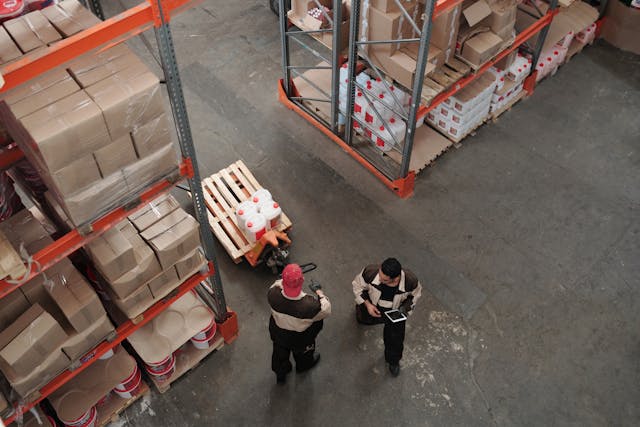The convergence of artificial intelligence and advanced machinery is poised to transform traditional industries in ways few could have imagined just a decade ago. From construction sites to manufacturing plants, the integration of AI-powered systems with heavy equipment is creating new paradigms of efficiency and productivity while simultaneously raising important questions about the future of work.
At the core of this transformation lies the integration of physical and digital technologies. Contemporary heavy machinery is increasingly outfitted with advanced sensors and AI systems, enabling the real-time processing of vast amounts of data. Take, for example, a modern excavator: where operators once relied solely on experience and intuition, today’s machines can now accurately measure depth, angle, and position while simultaneously analyzing soil conditions and optimizing fuel efficiency. These innovations extend beyond earth-moving equipment, impacting a wide range of industrial machinery, from assembly line robots to agricultural machinery.
The automotive manufacturing sector provides a compelling example of this evolution. Traditional assembly lines, which once relied heavily on human workers for tasks like welding and quality control, are now dominated by AI-guided robots that can perform these tasks with unprecedented precision. Even the production of specialized cat parts and components has been revolutionized by smart manufacturing systems that can detect microscopic defects invisible to the human eye and adjust their operations in real time to maintain optimal quality. One of the most significant impacts of this technological convergence is the dramatic improvement in safety standards.
“AI-enabled machinery can detect potential hazards before they become dangerous, automatically adjusting operations to prevent accidents.”
For instance, modern cranes can now anticipate and compensate for wind conditions, while mining equipment can detect structural weaknesses in tunnel systems before they pose a threat to workers.
The economic implications of this transformation are substantial. While the initial investment in AI-enabled heavy machinery can be significant, the long-term benefits often justify the cost. Companies implementing these technologies typically report significant reductions in operational expenses, improved productivity, and decreased downtime. Moreover, the ability to predict maintenance needs through AI-driven diagnostics has revolutionized equipment maintenance schedules, preventing costly breakdowns and extending machinery lifespan.
However, this disruption isn’t without its challenges. The workforce implications are particularly significant, as traditional operators and workers must adapt to new roles that increasingly focus on managing and maintaining AI systems rather than directly operating machinery. This shift requires a fundamental reimagining of industrial training programs and career paths. Workers who once prided themselves on their manual skills must now develop expertise in digital systems and data analysis. The environmental impact of this transformation is also noteworthy. AI-optimized machinery typically operates more efficiently, reducing fuel consumption and emissions.
“Smart construction equipment can complete projects faster and with less waste, while intelligent manufacturing systems can optimize resource usage and minimize scrap material.”
These improvements align with growing pressure for industries to reduce their environmental footprint and meet increasingly stringent sustainability requirements. Small and medium-sized businesses face particular challenges in adapting to this new paradigm. The high initial costs of AI-enabled machinery can be prohibitive, potentially creating a technological divide between larger corporations and smaller operators.
However, innovative financing models and the emergence of “smart machinery as a service” options are helping to bridge this gap, making advanced technology more accessible to smaller players.
Looking ahead, the integration of AI and heavy machinery is likely to accelerate. Emerging technologies like 5G networks and edge computing will enable even more sophisticated applications, while advances in machine learning will continue to enhance the capabilities of industrial equipment. The development of autonomous machinery, already evident in mining and agriculture, will likely expand to other sectors, further transforming traditional industrial operations.
The regulatory landscape is also evolving in response to these changes. Policymakers face the challenge of balancing innovation with safety and workforce protection. New standards are being developed to govern the use of AI-enabled machinery, while training requirements and certification programs are being updated to reflect the changing nature of industrial work.
As we move forward, the success of this technological transformation will depend on how well industries can manage the human element of change. Companies that invest in workforce development and create clear paths for career evolution will be better positioned to capitalize on the benefits of AI-enabled machinery. Similarly, those who can effectively combine human expertise with artificial intelligence will likely achieve the best results, as human judgment and experience remain valuable even in highly automated environments.
The disruption of traditional industries by AI and heavy machinery represents both a challenge and an opportunity. While the transition may be difficult for some sectors and workers, the potential benefits in terms of safety, efficiency, and environmental protection are substantial. As this transformation continues, the key to success will lie in finding the right balance between technological advancement and human expertise, ensuring that progress serves the needs of both industry and society as a whole.



